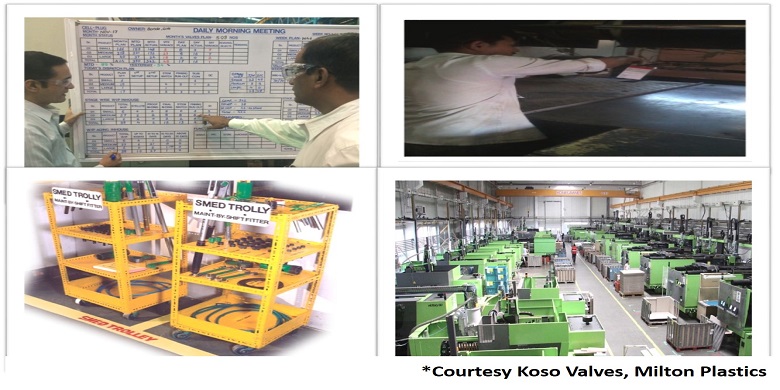I recently visited an organisation to suggest ways to “sustain their lean management practices”. This organisation is a subsidiary of a well-known brand and has been catering to its customers for more than 2 decades.
5S and TPM were practiced by the organization for over five years but sustenance is a big problem. During visit the drive from gate to factory building had beautiful posters on TPM. Shop floor had posters of the 8 pillars of TPM, 5S with description on each “S”.
We asked the managers about their methods, experiences to date and results they got. This is what they had to say:
- TPM was started two years back but no one reads the posters and practice TPM or 5S as on today
- New managers have been recruited and have not undergone training.
- There is plenty of pressure from management and customer to ship the material. They don’t have time to make improvements
- Paint shop problem exists over a period of two years in spite of problem given to maintenance
- Water heating time is higher – they lose 90 minutes as a start-up time
- Due to light fluctuation, staggering off on Thursday there is time loss as the insulation of water drier and powder coating is no good.
- TPM team is missing, leader and pillar heads are not there.
- During the visit to plant and Gemba walk along several of their value streams to observe performance and to talk with the line managers about their perspectives on the TPM journey.
- SOP was missing on few processes
- It was observed on the shop floor there was rework and rejection. Oil leakages in machines & Chemical leakages in the paint shop were rampant. Change over on the press shop was around 60 minutes. Multiple Checking in the Stamping/pressing line observed.
- Organization structure is designed where the silos are created.
- Daily morning meet takes place. The information is shared to everyone by email. Monthly customer requirement, plan, gap analysis on daily basis.
- Daily meet is attended by plant head and in his absence QA or production head takes over. Participants are head of production, QA, maintenance, tool room, HR, press shop, assembly, paint shop. Planning is sent to respective departments on daily basis with priority of every customer through mail.
- Alignment of people, processes with customers’ objectives is missing
The above problems are definitely an opportunity for the organisation and for lean consultants like us, but given this organisation’s overall approach, the question is “How will lean management help them in doing better?
First and foremost, the top management needs to review their organisational purpose considering the pandemic caused crisis situation and set the strategic direction. The priorities of the organisation needs to be sorted & straightened out considering its employees, customers and other key stakeholders in the long-term perspective.
Having said that all the aforementioned problems are opportunities for improvement, the employees are to be trained on lean fundamentals, made competent and then,
- Make sure every value stream has a cross functional Team with value stream manager or leader – to oversee the whole flow value and continually improving every aspect of the process to meet the need of the customer and the business
- Ask value stream managers how they will improve the value creating process they are overseeing
- All mangers should be trained to ask questions about their value streams rather than giving answers and order from higher levels
- All mangers should learn and practice A3. To ask right questions and the answer can produce sustainable improvements in value streams.
- Reality check of what is to be known and practiced to what is the current status of managers and supervisor
- Visual planning is missing. Instead of distributing plan to everyone via email it is necessary to have a shop floor visual board to conduct a standing meeting
Cross functional Teams are to be established, to manage, to accomplish and improve the work. Yet, often teams at work are no more than a near-random collection of people. If we were building a high-performance car, we would never do so without checking first that the parts were compatible. Building a computer, we would make sure the components could communicate with each other. While humans are far more valuable and variable than machines parts, the same need exists to check that we build teams as deliberate systems rather than a collection of people.
If you would like to make you Lean management initiative effective & efficient, write to info@vedzen.com


Comments / 0